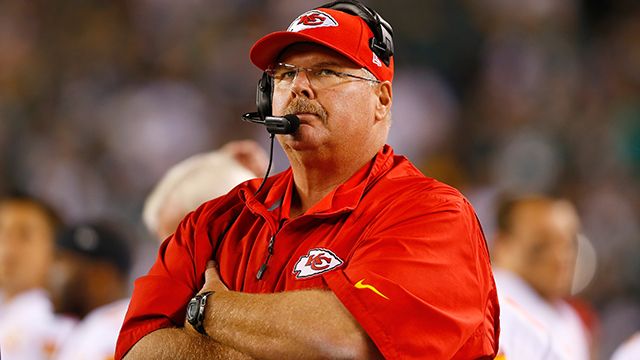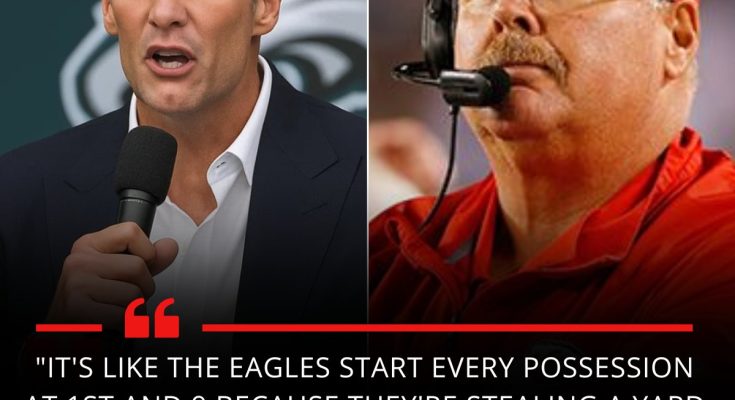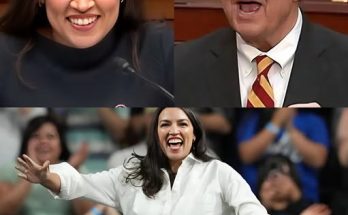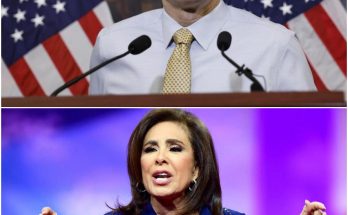
Tom Brady, one of the most decorated quarterbacks in NFL history, recently weighed in on the debate surrounding the Philadelphia Eagles’ controversial “Tush Push” play. The play, which has taken the NFL by storm, involves a quarterback sneak, often executed in short-yardage situations, where the QB is pushed from behind by teammates to gain the necessary yards. Brady, however, isn’t a fan, calling the play an “unfair advantage” that feels like “starting every drive at 1st and 9.”

Brady’s criticism comes on the heels of the Eagles’ continued dominance in the fourth quarter using the Tush Push to convert crucial short-yardage situations. In their recent game against the Kansas City Chiefs, the Eagles successfully ran five quarterback sneaks in the final quarter, showcasing just how difficult it is to stop the play when executed perfectly. The quarterback, usually Jalen Hurts, powers through with the help of his offensive line and a few pushers from the back, often leaving defenses helpless to prevent the gain.
While the Tush Push has become a staple of the Eagles’ playbook, Brady’s comments have sparked a fierce debate: Is the play a strategic masterpiece, or is it a loophole that skirts the spirit of the game?
The Strategy Behind the Tush Push
The Eagles’ success with the Tush Push is a testament to the physicality of their offensive line and the durability of Hurts as a quarterback. The play essentially forces the defense to try and stop a moving wall, making it nearly impossible for defenders to react in time. The advantage lies in the sheer power and timing of the push, which makes it extremely difficult for defenders to break through. When you combine that with Hurts’ ability to read the situation and power his way through with his legs, it’s no wonder the Eagles have been so successful with this tactic.
But Brady’s comment highlights something else: the play does, in a way, start each drive in a position that would otherwise be more challenging for a team to achieve. It’s essentially like guaranteeing a manageable yardage on every drive, which some critics argue gives the Eagles an unfair advantage.
A Rule-Bending Loophole?
The real controversy centers around the question of whether the Tush Push should be considered a loophole in the rules. The NFL rulebook permits players to assist their teammates by pushing them, but only in limited circumstances. However, many feel that the Eagles have perfected a strategy that bends the rule, taking advantage of a grey area in the game’s regulations.
Other teams, including the Chiefs, have tried to replicate the play, but none have been able to execute it with the same level of success. This has led some to question if the play goes beyond the spirit of the game, especially when its dominance is almost entirely based on technique rather than pure athleticism or innovation.
The Debate Intensifies
As the Eagles continue to rack up wins using the Tush Push, the debate shows no signs of slowing down. For some, it’s a brilliant tactical advantage, a way to maximize the power of a quarterback sneak. For others, it’s a borderline loophole that needs to be addressed by league officials to level the playing field.
What’s clear, however, is that the debate is far from over. As Brady pointed out, the play feels like an unfair advantage that shifts the balance of the game. But whether the NFL will take action and impose restrictions on the Tush Push remains to be seen. For now, the Eagles’ continued success with it only adds fuel to the fire, making it one of the most talked-about strategies in football today.



